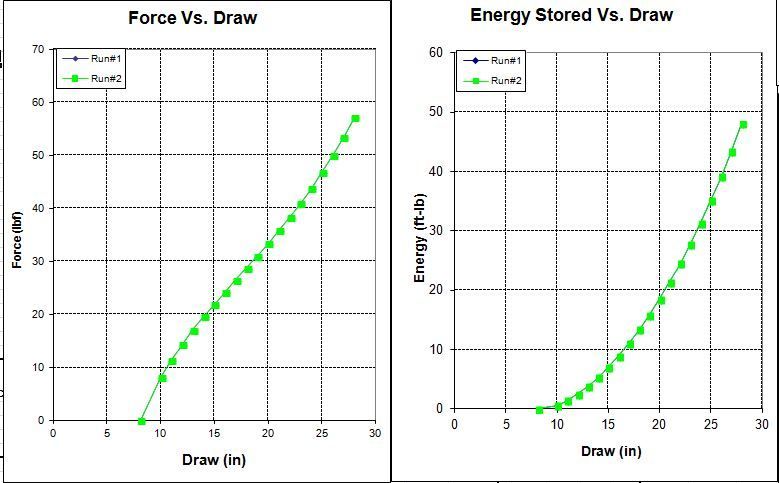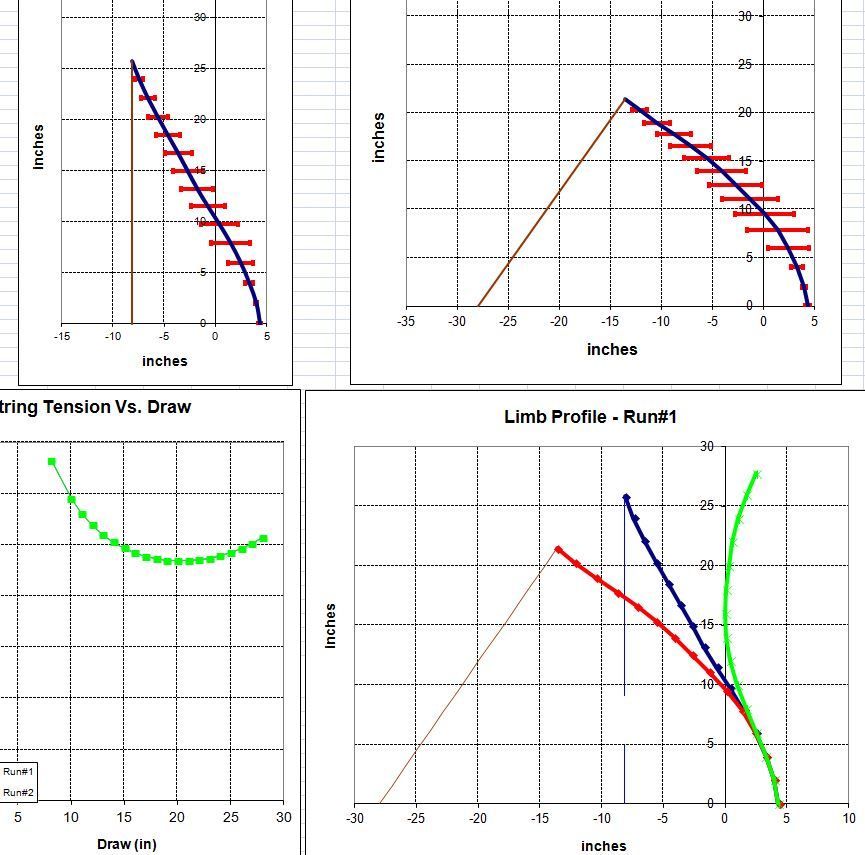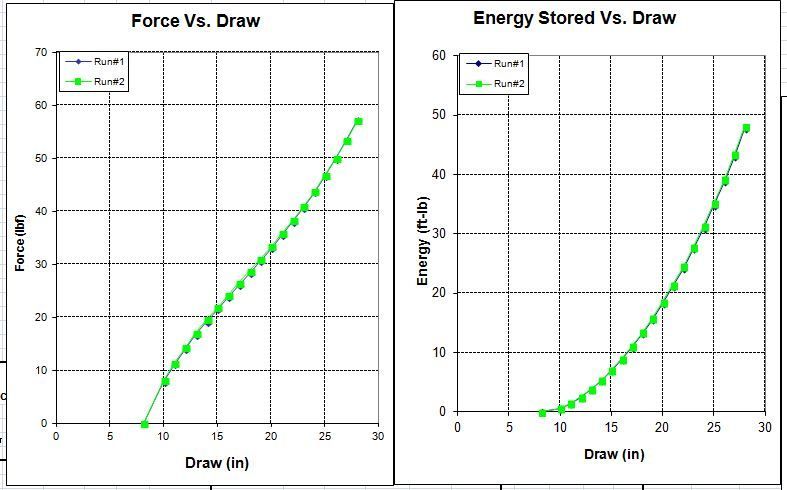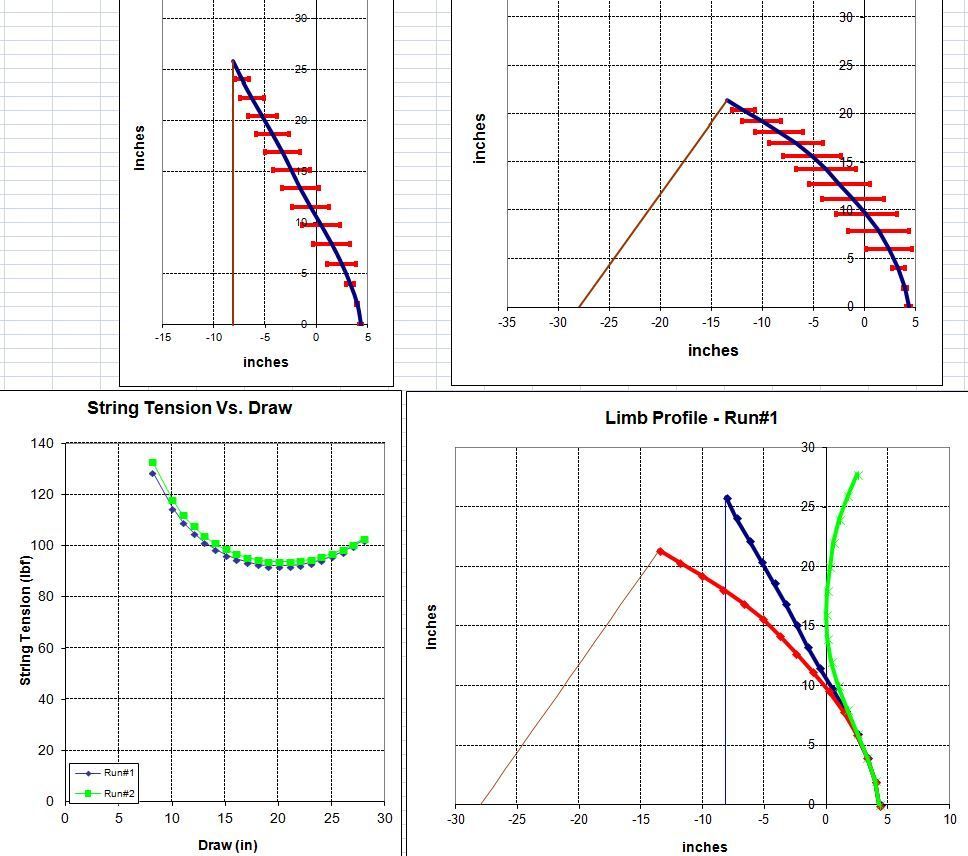I read a thread a while back where guys talked about what thickness taper they used in their bows. It seemed like most fell in the .002-.004 range, with more the thicker the total stack was. It also seemed important that total taper was a combination of the thickness taper and width taper, and that too much taper would allow the tips to open up early, causing stacking.
I've been playing around with the Supertiller software. The bow shape is modeled after the 58" thunderchild. Lots of deflex... some reflex also. I have straight width tapers from 1.5" at the fades to .5" at the tips, 12" handle and 14" power lam.
The first set of graphs is for NO thickness taper. The draw curve doesn't look terrible to my eye, and more importantly the string angle isn't over 90 degrees at my 28" draw. I'm not sure what to make of the stresses graph, but hopefully someone can give some feedback on that.


And here below are the graphs with a .005 thickness taper. Draw weight @ 28 for all of these models are right around 57.5#. On the energy storage curve, the blue line (.005 taper) dips a bit lower in the center. Otherwise they are equal to the zero taper. And then we see the profile graphs. If anything, the string angle is opened up a bit more, and the stresses are maybe a little more evenly distributed through the tips rather than primarily through mid limb.


The Stored Energy per Draw Weight for the zero taper is 0.841. For the .005 thickness taper it's 0.831. So the zero taper is a little more efficient at storing energy. From the software it would seem to me that zero taper would be the better choice. Are there any real world reasons I'd want to use the taper for this short bow with aggressive R/D? Such as lighter tips allowing for a little better arrow speed upon release, hand shock, etc? According to the draw force graphs, smoothness of draw should be a wash.











